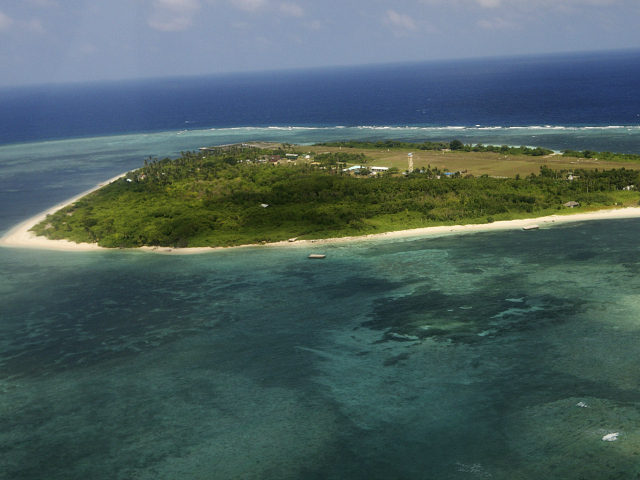Speaking to NPR, Philippine political experts have expressed concern that the Obama administration’s support for their territorial claims in the South China Sea will evaporate, comparing the situation to President Obama’s long-abandoned “red line” in Syria.
“We already heard this red line statement on Syria, and clearly saw how [it was] not [a] red line after all,” Richard Heydarian, a researcher at Manila’s De La Salle University, told NPR. He says the new administration in Manila, under President Rodrigo Duterte, fears the White House may have created an “artificial posturing red line” when warning China to stay out of international territories in the South China Sea that it has usurped.
Those in the Manila government expressed hope that, because China’s illegally constructed islands pose a direct threat to American military assets, there is no incentive for Washington to cave on their promises to protect the region. “If you have an airfield [in the Scarborough Shoal], maybe it will take just 15 minutes for the fighter jets there to reach Manila and the U.S. forces using Clark [Air Base] and Subic [naval base] are all within range,” Philippine Supreme Court associate justice Antonio Carpio notes.
“Even [Chinese] strategists would know, I think, that the Scarborough Shoal would be a tipping point for the U.S. and Japan, given how the situation has radically changed,” Jay Batongbacal, director of the Institute for Maritime Affairs and Law of the Sea at the University of the Philippines, added.
China has constructed illegal artificial islands in the Scarborough Shoal and Paracel and Spratly Islands, placing fighter jets, surface-to-air missiles, and advanced surveillance equipment there. China claims most of the South China Sea, including territory also claimed by the Philippines, Vietnam, Malaysia, Brunei, Taiwan, and the waters of Indonesia.
Last week, the Permanent Court of Arbitration at the Hague found that China’s claims to the region were entirely invalid.
In what is being interpreted as a response to that ruling, Beijing is going ahead with military exercises in the disputed territory, keeping all international ships out of the waters near Hainan Island for most of the week. The announcement of these exercises occurred during a visit to Beijing by the U.S. Navy’s top admiral, Chief of Naval Operations Adm. John Richardson.
Chinese news media have confirmed that Adm. Richardson has met with senior Chinese officials but did not provide many details of the meeting, only that Chinese officials asserted “that China will never sacrifice its sovereignty in the South China Sea, saying the Chinese navy is prepared to face any provocation.” “The U.S. flexing of military muscles in the South China Sea has deeply hurt the Chinese people,” legislator Chen Xiaogong protested Monday in an article in the state-run outlet Xinhua.
Reuters reports that Chinese military officials have threatened “disaster” for any ship that participates in a freedom of navigation exercise, a common practice used to assert the legality of peacefully transiting through international waters.
The U.S. has conducted two high-profile freedom of navigation operations in the region: in October 2015, by the USS Lassen, and in February 2016, by the USS Curtis Wilbur. In addition, American Secretary of Defense Ashton Carter has sailed through the South China Sea personally aboard the USS John C. Stennis in April and the USS Theodore Roosevelt in November. Carter invited Philippine Defense Secretary Voltaire Gazmin to join him on the former occasion.

COMMENTS
Please let us know if you're having issues with commenting.